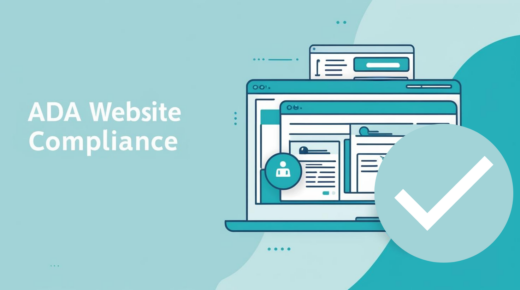Most local businesses are small, brick-and- mortar companies that conduct business face to face in enclosed spaces. Millions of nonessential local businesses nationwide were forced to stop or limit their operations since March 2020 to reduce the spread of the COVID 19 virus.
Many of their customers also lost their jobs. However, some local businesses survived and even managed to increase their sales.
Local businesses that continued to operate during the pandemic are those that adjusted to their customers’ needs and still comply with the COVID-related restrictions.
How to Increase Local Business Sales during Covid 19
Following are some of the changes, adjustments and other creative ways that local businesses made to continue generating revenues in spite of the difficult situation.
1. Review the company’s products or services
COVID-19 has changed how people go about their daily lives. So, some of your company’s products or services may be irrelevant to their current needs, while the demand for other products has doubled or tripled.
Ask yourself the following questions to assess your products or services.
- What products and services are currently irrelevant or can’t be available to your customers?
During the pandemic, you may be selling products that aren’t relevant to your customers anymore. For example, if you own a gym, your current customers can’t visit your gym or you can allow only a limited number of them to comply with the health protocols set by the health authorities.
- What changes or other products and services can you offer?
So, how can you serve your customers while they’re at home? Can you make personalized exercise videos or offer online sessions to guide them while they exercise at home?
Another example is a perfume manufacturer that converted its production line to make alcohol or other hand sanitizers which are in high demand. Also, a clothing company produced the much-needed personal protective equipment (PPE) for frontline health workers.
In customer service, can you offer video conferencing (Skype or other platforms) to clarify certain issues that require several questions and answers?
Local businesses may need to tweak their business models to meet the needs of their customers.
As more people get vaccinated, don’t expect everything to be back to what they were before COVID 19. Some rules will change. You have to constantly monitor the business to decide how you can continue to sell your products and services
2. Train employees on new skills needed to support the changes in the new business models.
One of the many challenges in changing the way local businesses operate is training their employees on the technologies to be used. So, assess what skills are lacking in your company and offer the appropriate training to those who are interested.
You can hire new employees with the needed skills but there are many advantages to training your current staff than letting them go. It will be faster to train your existing employees because they already know your product and your company. You will gain employee loyalty and a positive reputation as an employer.
3. Sell online.
The majority of local businesses rely upon face-to-face customer interaction. Shifting to e-commerce has allowed them to present their products and services in ways that don’t need physical, face-to-face interaction.
For example, you can offer virtual demos by your store associates if you’re selling cosmetics, clothing and fashion accessories.
By shifting to e-commerce, local businesses won’t have to worry about decreased foot traffic and the other negative effects of lockdowns on their business. Buyers can still choose and buy what they want without leaving their homes. Then, offer them the choice whether to pick up the items they bought or have them delivered.
E-commerce also makes it easier to expand your customer base.
4. Increase Sales with Organic Marketing
Paid ad campaigns may give you faster results but when marketing funds are low, it’s time to use more organic marketing strategies. Implementing the right strategy, organic marketing can generate the needed web traffic for your business over time.
Organic methods include free social media posts (Facebook, Youtube, Pinterest, etc.), website content, e-mails, SEO, listing in online directories (Google, Better Business Bureau, Yelp, etc.), membership in online groups and communities and attending events in your community.
Organic or inbound marketing is a cost-effective way to build brand awareness, interact with your customers and drive web traffic which are needed to improve sales.
You can also try combining organic and paid digital marketing. In some companies they complement each other very well.
5. Pay attention to delivery service and fulfillment
On-time delivery of the right product is a key factor in the success of any online business. Customers need to get what they bought according to the agreed delivery schedule.
Make sure you have reliable delivery service providers. During this pandemic there is high demand for third-party delivery services.
Your fulfillment or packing area should have enough and well-trained employees to ensure that the products are properly packed and delivered to the right customers
6. Adjust customer service and communications with suppliers
Any changes in your local business operations should be made known to your customers and if necessary, your suppliers, too. Your customer service before the pandemic may no longer meet the needs of your operations now. Here are some of the adjustments you may need to implement:
- Extend customer service hours.
If most or all of your customers can’t visit your site to actually see your products, expect more questions before they decide to buy. You can make your sales if you settle their questions fast. - Resolve customer complaints quickly
Depending on your type of products or services find the most appropriate ways to resolve any customer complaints quickly. The way your company handles complaints would greatly affect your reputation. - More communication channels.
Make it easy for your current and potential customers as well as suppliers to communicate with you. Assign somebody to promptly reply to their emails and social media messages as well as to their chats, telephone and video calls. - Provide more information or references about your business, product and services
Create and make available online a comprehensive collection of information about your company and the products and services you offer. For example you can provide videos showing your products and how to use them. This would save your staff from answering repetitive questions from potential customers.
You can also use blogs on your website to have more detailed information about the benefits of using your products or services. - Reach out to suppliers
On-time delivery is a must to retain customers. Always confirm with your suppliers the status of your orders while you still have time to inform your customer in case any order can’t be served.
To get more sales, you have to establish proper coordination and communications with your customers and suppliers.
7. More Payment Options
Fear of coronavirus infection had made more and more consumers choose to buy online and use contactless payments. The most common online payment methods include bank transfers, credit and debit cards, and mobile wallets.
You’re likely to get more sales if more customers can use their preferred payment option.
Plan and move forward
According to the White House press briefing on the first week of June 2021, “52 percent of adult Americans are fully vaccinated.” That’s near the target of vaccinating 60-70% of the population to reach “herd immunity.”
Certain US states have started to ease COVID-19 restrictions. However, there is no certainty when life would be back to normal because the resurgence of infection due to the new coronavirus variants in other countries could also happen in the U.S. Another reason for the uncertainty is the delay in the approval of the vaccines for children. So far, the FDA has approved only Pfizer-BioNTech for adolescents 12 years and above in May this year.
Would you need a new business model again?
To determine if you need to make new changes as more of your customers are vaccinated, you have to review your business again. You may start with the following questions:
- If you have made changes in your operation which of those changes will you stop or continue doing?
- What products are most likely to remain in demand even after the pandemic? For example, gym customers may prefer your personalized workout videos than to go back to your gym. Or, many people may continue to buy things online for convenience.
- What are your competitors’ positive changes that you have not implemented in your business? What prevents you from doing the same?
Would you need to change your business model again? It will depend on the new customer demands as well as supply in your industry and location.
As local businesses wait for the time when the fight against the coronavirus is over, don’t assume that your operation will be back to what it used to do before COVID 19. You should review the prevailing changes in your customers’ purchasing behavior. Think also of the advantages of using new technologies during the pandemic.
Conclusion
The COVID-19 crisis has forced local businesses to re configure their operations. They were in an emergency situation and they had to make the changes without enough time to assess the results. Many business owners and employees had to learn fast the new technologies needed for the new processes.
The innovations made by local businesses that have so far survived COVID 19 are not easy to implement. However, they show that switching marketing strategies, shifting to e-commerce and improving client-focused communications increase customers and drive sales.
Try the tactics that are applicable to your local business and watch your company make more sales during and after the pandemic.





